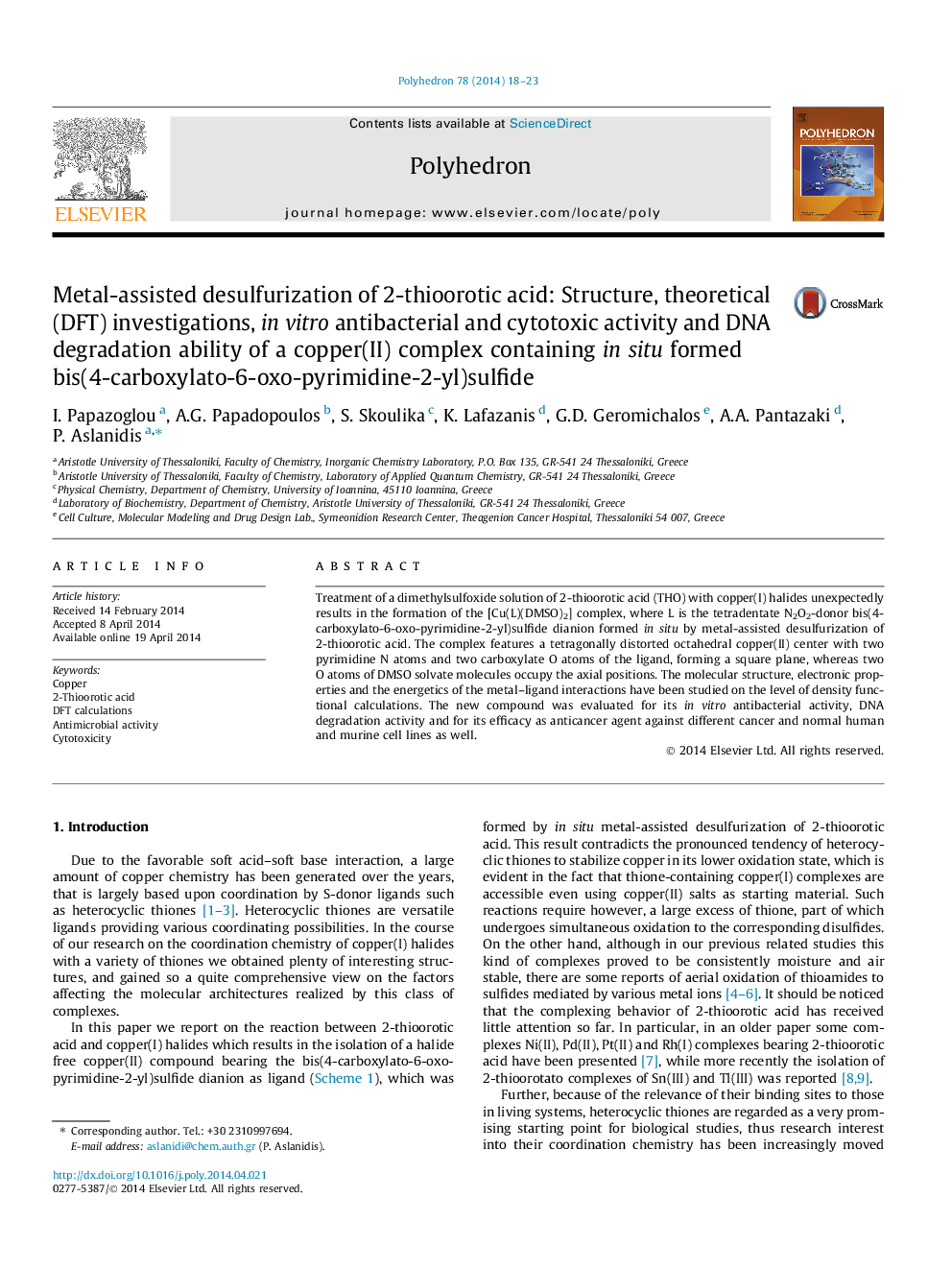| کد مقاله | کد نشریه | سال انتشار | مقاله انگلیسی | نسخه تمام متن |
|---|---|---|---|---|
| 1337818 | 1500261 | 2014 | 6 صفحه PDF | دانلود رایگان |

Treatment of a dimethylsulfoxide solution of 2-thioorotic acid (THO) with copper(I) halides unexpectedly results in the formation of the [Cu(L)(DMSO)2] complex, where L is the tetradentate N2O2-donor bis(4-carboxylato-6-oxo-pyrimidine-2-yl)sulfide dianion formed in situ by metal-assisted desulfurization of 2-thioorotic acid. The complex features a tetragonally distorted octahedral copper(II) center with two pyrimidine N atoms and two carboxylate O atoms of the ligand, forming a square plane, whereas two O atoms of DMSO solvate molecules occupy the axial positions. The molecular structure, electronic properties and the energetics of the metal–ligand interactions have been studied on the level of density functional calculations. The new compound was evaluated for its in vitro antibacterial activity, DNA degradation activity and for its efficacy as anticancer agent against different cancer and normal human and murine cell lines as well.
Treatment of a dimethylsulfoxide solution of 2-thioorotic acid with copper(I) halides results in the formation of the [Cu(L)(DMSO)2] complex, where L is the tetradentate N,O-donor ligand bis(4-carboxylato-6-oxo-pyrimidine-2-yl)sulfide dianion formed in situ by metal-assisted desulfurization of 2-thioorotic acid. The new compound was evaluated for its in vitro antibacterial activity, DNA degradation activity and for its efficacy as anticancer agent against different cancer and normal human and murine cell lines.Figure optionsDownload as PowerPoint slide
Journal: Polyhedron - Volume 78, 16 August 2014, Pages 18–23